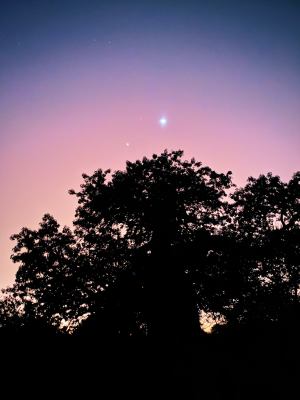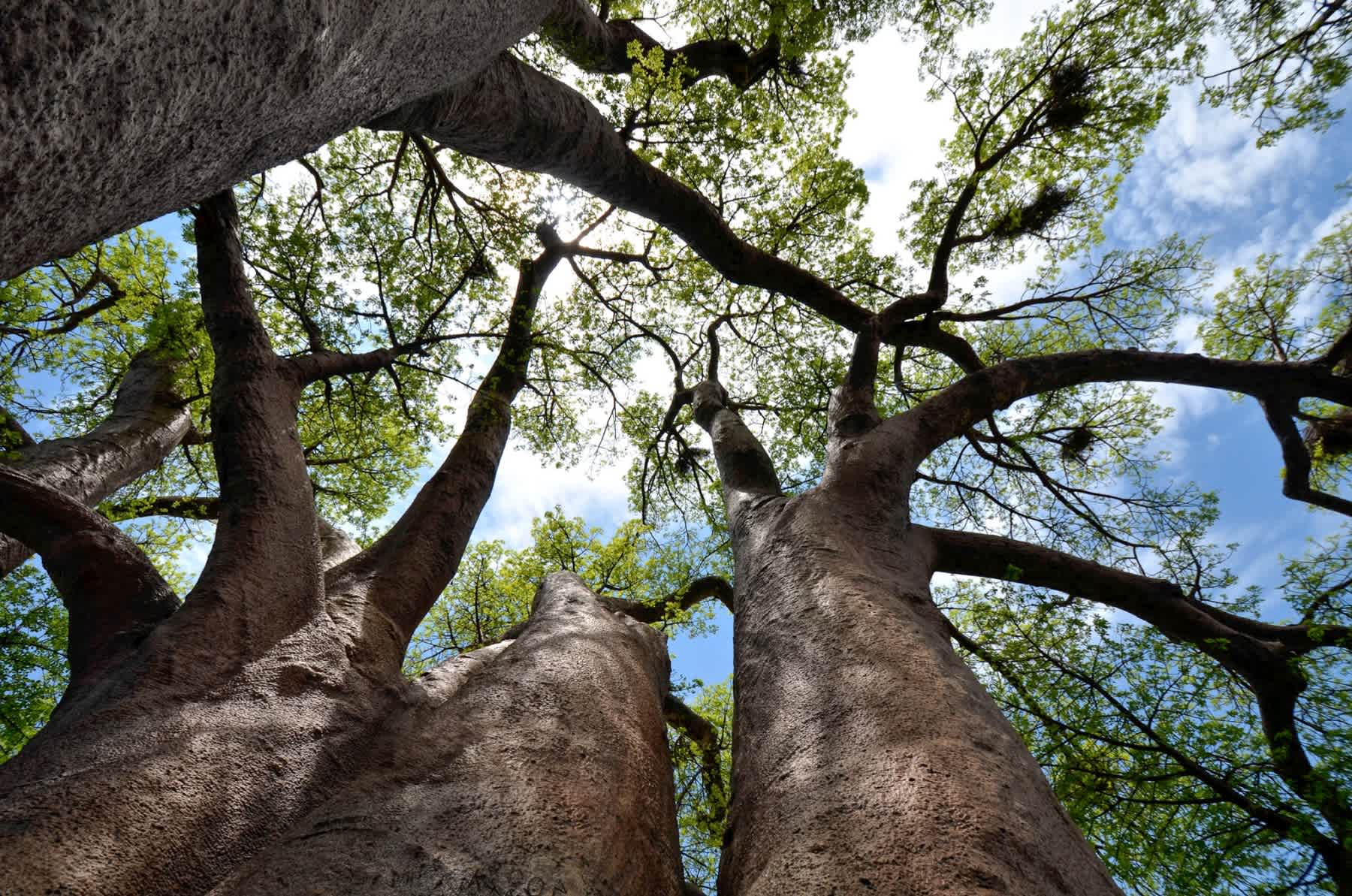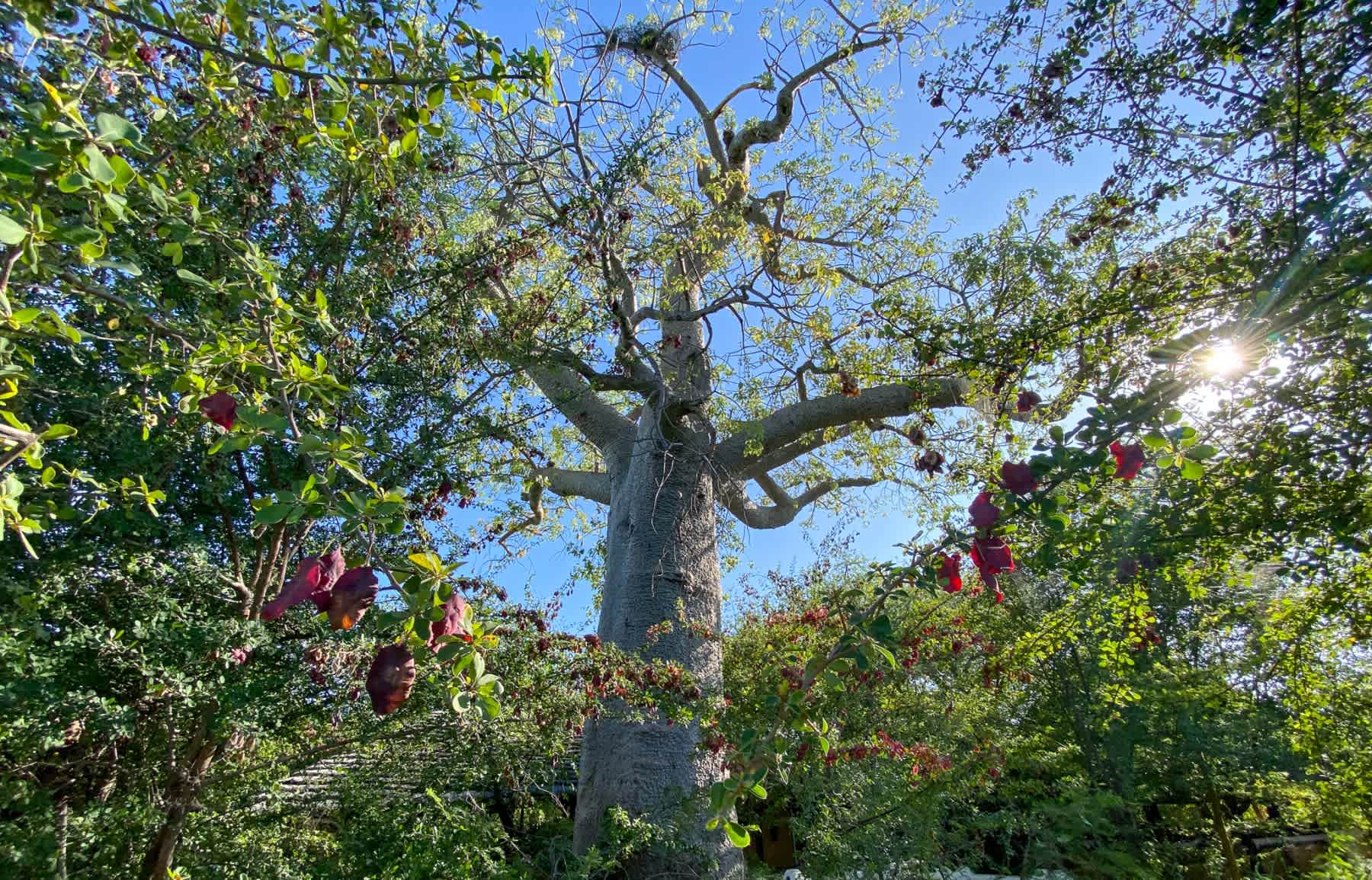Blog
The Tree of Life
Tate Drucker is the Content Creator on the 2022 Tour d’Afrique. Her second post comes to us from the savanna of Botswana with the tour now well underway. Be sure to follow their progress on Instagram.
When traveling throughout Botswana, there’s an endless number of unique and foreign sights which pull the attention of visitors. Elephants moving in a slow-moving mass of gray throughout the Kalahari; herds of zebra trotting alongside the road with their clumsy foals; colourful hornbills calling to each other; the tangled branches of acacia trees.
However, there’s one unique entity in this sun-drenched corner of the world that cranes the necks of visitors as they stand at its base, looking up, trying to grasp the sheer size and immensity of it. This thing, while not an animal moving its way across the plains, is no less impressive. And certainly when you stand next to it, it feels no less alive.
 It’s hard to imagine a tree more steeped in history and honoured for its useful properties than the mighty baobab tree. Baobabs can be found in Australia and Madagascar, though they are mostly found throughout the mainland African continent. This prehistoric tree is thought by most experts to be able to live up to 5,000 years, and many of the enormous trees that pinprick the plains of Zambia and Botswana are estimated to be between 1,000 to 2,000 years old. Many first-time visitors to Africa ask how they’ll be able to identify a baobab tree before they’ve seen one, but once they do, it’s obvious that this tree stands out and is something significant.
It’s hard to imagine a tree more steeped in history and honoured for its useful properties than the mighty baobab tree. Baobabs can be found in Australia and Madagascar, though they are mostly found throughout the mainland African continent. This prehistoric tree is thought by most experts to be able to live up to 5,000 years, and many of the enormous trees that pinprick the plains of Zambia and Botswana are estimated to be between 1,000 to 2,000 years old. Many first-time visitors to Africa ask how they’ll be able to identify a baobab tree before they’ve seen one, but once they do, it’s obvious that this tree stands out and is something significant.
Although baobab trees are not the tallest trees on earth, their squat, wide width is what makes them so distinctive. The trunk of a baobab is thought to be able to grow up to 14 meters in diameter, and the trunk itself — which consists of multiple stems — creates a unique, hollowed center. Anthropologists have found that the indigenous San tribes in Namibia and Botswana often use the hollow baobabs as shelter; there are even reports of baobabs being used as jail cells and, in the 1800s and early 1900s, as post offices and pubs by colonial settlers.
 The baobab tree is Africa’s “Tree of Life,” and is known as this for a good reason. A baobab behaves essentially as a giant succulent, absorbing an impressive amount of water and holding it in its trunk (approximately 80% of a baobab is, in fact, water). To put that into perspective, a single tree can hold up to 1,189 gallons. This is why it’s not uncommon to see animals such as elephants and elands chewing on the bark of the trunk during times of draught, and the baobab has also been a source of water for people who live in rural, draught-ridden areas.
The baobab tree is Africa’s “Tree of Life,” and is known as this for a good reason. A baobab behaves essentially as a giant succulent, absorbing an impressive amount of water and holding it in its trunk (approximately 80% of a baobab is, in fact, water). To put that into perspective, a single tree can hold up to 1,189 gallons. This is why it’s not uncommon to see animals such as elephants and elands chewing on the bark of the trunk during times of draught, and the baobab has also been a source of water for people who live in rural, draught-ridden areas.
Baobabs also have one of the most nutrient-dense fruits on the planet. These mildly sweet, oblong, velvety gourds contain some of the highest concentrations of vitamin c, calcium, iron and potassium compared to other fruits around the world. For communities in remote corners of Southern Africa where access to fresh fruits may be slim, baobab seeds offer valuable nutrition that would be otherwise exceedingly difficult to obtain.
The bark of baobab trees are flame retardant, making them almost invincible to wildfires and lightning strikes; something almost unheard of in a corner of the world that isn’t a stranger to drought and electrical storms. Its soft and fibrous bark has been used to make fire-resistant clothing and rope for indigenous communities, as well as for early colonial settlers.
Every inch of the baobab tree seems to have something to offer, making it a symbol of wellness that stands stout and strong in a sea of bramble across the savanna.

RELATED
TOUR

Tour d'Afrique
Our original trans-continental journey and flagship expedition crosses Africa from north to south, covering 10 countries in all. Beginning at the...
 REGISTER NOW
REGISTER NOW




Leave a Comment for "The Tree of Life"